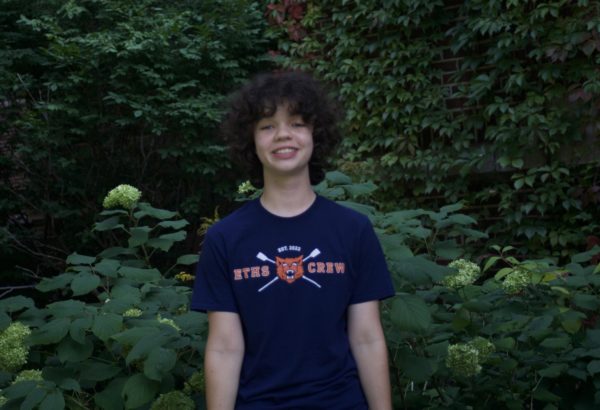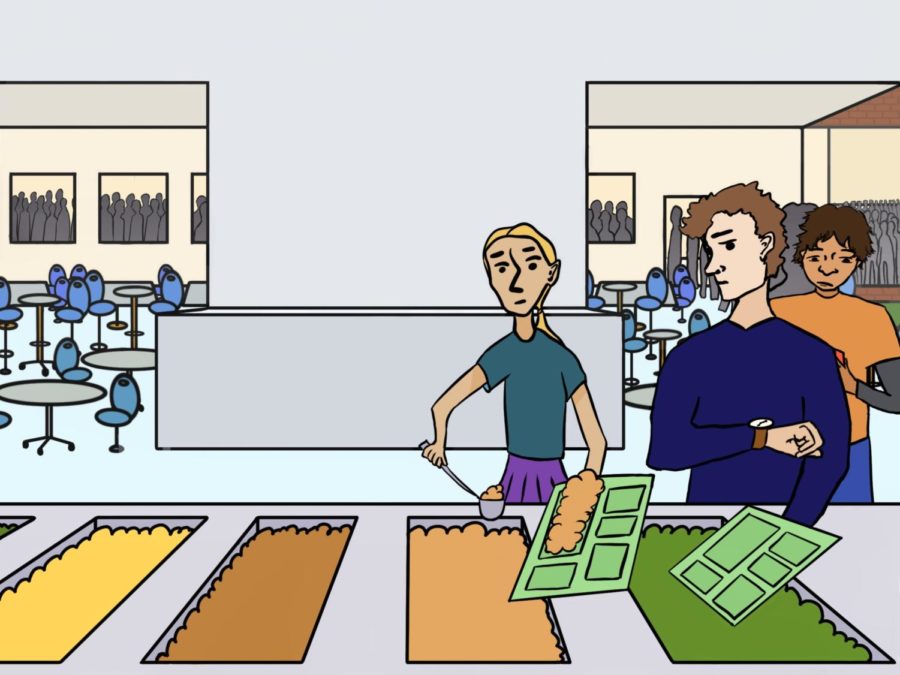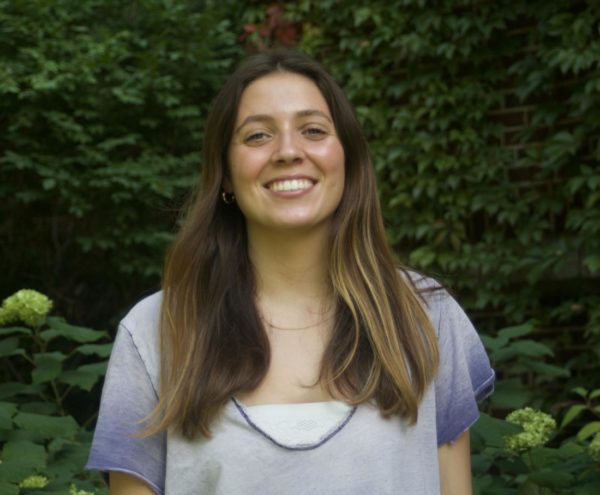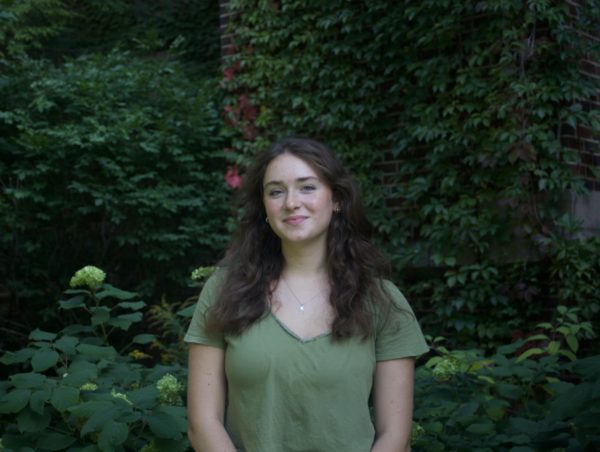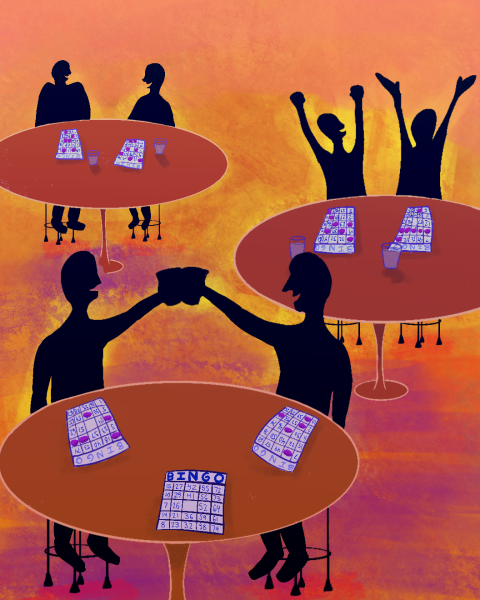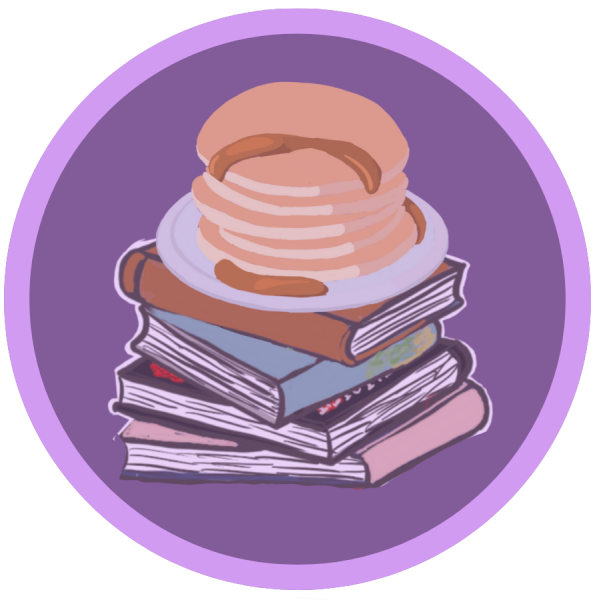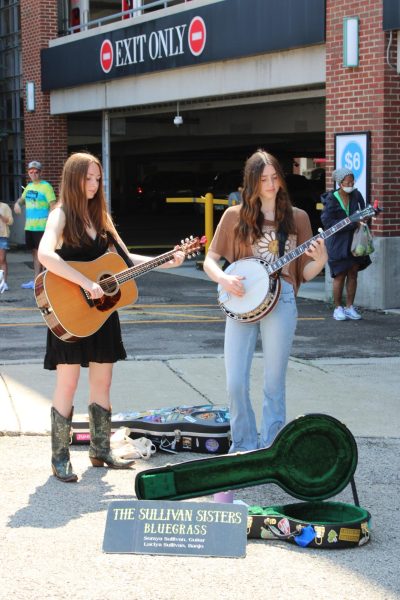The challenge of scheduling lunch at the high school with the largest student body
With a student body of nearly 4,000 students, scheduling lunch in an effective way has been on the mind of ETHS administration since returning from virtual schooling.
For students like senior Mason Denlow, lunch is the best time of the day.
“Throughout all my years at ETHS I have always been able to enjoy lunch with my friends. Freshman year I was happy to eat in the cafeterias and I was always able to get in no problem. Sophomore year was obviously different with the virtual stuff, but my junior and senior years, being able to leave the school has been really nice,” Denlow shares.
With COVID-19 concerns and the structural shift to a block schedule in the 2020-21 school year, lunch periods have changed significantly over the past couple years.
“When I was a freshman, there were three lunch periods, which made the cafeteria scene look different than it does now,” Denlow recalls. Since the pandemic school-year, there have only been two lunch periods. Also, some new lunch areas have been made available for students to enjoy their lunch, while others have closed.
From the cafeterias to the libraries, from the Hub to scanning out to leave, lunch now looks different for every student at ETHS.
These changes have also led to questions. What happens when your cafeteria gets to full capacity before you get there? Or the Hub? What if you are unable to leave the school because of grades, record (tardies, detentions, etc…), transportation or weather? There aren’t too many options for students that find themselves in these situations, but one place for students to retreat to during their lunch periods is the libraries throughout the school. However, for many years, there has been a policy in place that prohibits eating in the library.
School librarian Robina Button has a simple reason for this no-eating policy in the libraries.
“Usually what happens is when people eat, crumbs fall down and it attracts the mice,” Button says. “I’ve seen them in here. One time in [Central Library,] it ran over someone’s backpack, and everyone was screaming of course. I grabbed a Tupperware and caught it and then brought it outside… It also attracts the cockroaches, insects, and then they eat the glues of the books, and then there goes a whole collection. That’s why we don’t allow food.”
This ‘no eating’ rule is really just to keep little critters from roaming around our school—something no one wants to deal with. When provided with that reasoning, not many people argue with the libraries’ no food policy.
There are some students who, having spent their lunch in spaces where they aren’t able to eat, will then have to eat their lunches during class periods. While eating during class isn’t prohibited—and a lot of the time teachers do allow students to come in and eat in their classrooms— most would think that a school as large as ETHS would accommodate all students in their lunchrooms.
Another common place students eat lunch every day is the Hub; a space created in the past decade for students to study and a popular meeting place for clubs and activities at ETHS. The Hub has a certain capacity, so once they hit the maximum number for lunch, the Hub staff members don’t allow students to enter. Along with this, they only allow two students per table in the back and four per table near the front. These are all measures that the staff feel they need to maintain so that order can be sustained during hectic lunch periods.
Given the many concerns with lunch in the hub and elsewhere, staff and students want more areas to be open to eat. “I think, maybe, if they had more space where people can eat, that would probably alleviate the issues,” Button states.
Button also refers to the Student Voice Forum that was held the week before winter break. The forum was put on by Student Union with the goal of addressing the issues that the students care about in the school. At the forum, there was a table where students could discuss the pros and cons of the current lunch system, and students did not hold back their opinions.
Student Union advisor and History teacher Michael Pond explains what Student Union has been discussing these past couple months stemming from student opinions.
“A lot of [those conversations have] been [happening] because of the Student Union and student frustrations in general. [The administration is] trying some new things. They opened up South cafeteria to any student.” He continues, “We were limited as to our safety staff, which was a reason for a lot of the restrictions that were taking place. Now, students can also [leave lunchrooms] to go to classrooms with passes as well. So I would say that it’s not just the Student Union, but I think student voices in general that led to those changes.”
This is not a new issue for the student union either—they have faced many issues with lunch throughout the years. These problems have ranged from food served at the school to which school rooms are available for students to eat in, to staffing and regulation. They have always used their position with the administration in the ways that they believe are most helpful to the student body.
As challenging as making change can be, the administration has taken steps to listen to the needs of their students, and is working with Student Union to make more smooth and enjoyable lunch periods for all. In fact, the admin team turned student voices into a survey that the school sent out to students, which led to the decision to open South Cafeteria to all students starting in semester two.
“In general, I think the Student Union has a lot of power. When it comes to lunch, it’s been more challenging, and I think that’s because there have been some constraints with things like finances and staffing availability.” Pond explains.
The change in lunch structure coming from administration does show how they are willing to listen to the students—and their wants and needs for designated social time during school hours. Working together with the Student Union does have an impact, it isn’t just a club to complain about the problems with ETHS, but it brings action to these issues; just like the lunch situation.
With the start of the new year and third quarter, students will see some new lunch policies. For second semester, all students can eat in South Cafeteria, no matter what their assigned lunchroom is. While this opens up a space for more students to enjoy lunch with friends who aren’t assigned to the same cafeteria, it has also crowded the school’s smallest cafeteria and made it much harder for students who are assigned to South to access it for lunch.
Additionally, Door 3 has recently been opened as a way for students to get in and out of school during lunch blocks. During first semester, only Doors 1 and 2 were available because staffing shortages limited who could scan students in and out of the building. But listening to the voices of the students, the administrators found a way to open up this door for a more convenient way into the building for a large number of students.
There are many factors that the administration has to take into account when shaping its lunch-time services. Problems like availability of safety personnel, access to food in locations other than the cafeterias, and maintaining safety in places where students are during the lunch block make it hard for administrators to make the structure too loose. Still, they have some ideas about changes to be made next school-year. For example, they are looking at a way to return to the three lunch periods that existed before the move to the block schedule.
“It would be interesting to see if there would be a way next year to open it up to three lunch periods, but then that would require half-blocks. There’s a lot of schedule maneuvering that we would have to do. Unlike prior to the block schedule, we’ve got less flexibility with when we can schedule lunch, which presents challenges,” Pond states.
The Academic Study Center is also available for students to eat lunch if they need academic assistance with anything ranging from Spanish to Calculus. In the study center, they can meet with a teacher from whatever subject they need or they can see a peer tutor. However, students are not permitted to spend their lunch block in the Academic Study Center if they aren’t getting help on school work. There is a “No Phones Allowed” policy, which is implemented to keep students on task and use the Academic Study Center for its intended purpose: getting extra support for learning and studying outside of the classroom.
Yet, in practice, the environment in the study center can be more social than academic for some. During lunch blocks, there are groups of friends huddled at tables all around the space, with their phones out and no sign of schoolwork.
Sophomore Emilia De La Torre says her experience with the study center varies. “There are some times we will all be caught up on work, but other times we separate and work with different teachers,” she shares.
De La Torre explains that while access to a resource like the Academic Study Center is very helpful, it also serves as a way to eat lunch with her friends if they don’t have the same assigned cafeteria as her. Since the center allows for a sort of social break during the day, the policies of the Academic Study Center become foggy and inconsistent, opening the door for a potential change in official policy.
Another issue that most students and staff agree on is that the courtyards should be reopened to eat in. “Having the courtyards open for lunch last year was really nice. I liked eating there. It was fun,” Junior Jeremiah Lobin Schwartz says.
The outdoor lunch options were clearly well-liked among students and staff, but ever since coming back for the 2023 school year, the Safety Officer staffing shortage has made it impossible to regulate the courtyards
Although it is the coldest time of the year, the option to sit outside during semi-warm days or at the beginning of the school year would be an option for students to get a breath of fresh air in the hours that they are stuck at school. Even though, on the days that weather permits, there are circles of students scattered around the grassy areas of the courtyards, a table and chairs are appreciated and contribute to a much more enjoyable lunch.
Being the largest school under one roof in the nation, lunch is a struggle to control. ETHS students’ lunch habits are formed around ever-changing necessary but sometimes inconsistent policies.
Lobin Schwartz concludes, “Lunch is a time that we all want to enjoy, so it is important that the school can provide that for us.”
Your donation will support the student journalists of the Evanstonian. We are planning a big trip to the Journalism Educators Association conference in Philadelphia in November 2023, and any support will go towards making that trip a reality. Contributions will appear as a charge from SNOSite. Donations are NOT tax-deductible.
